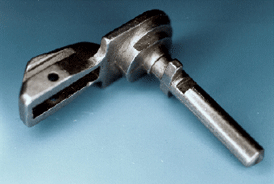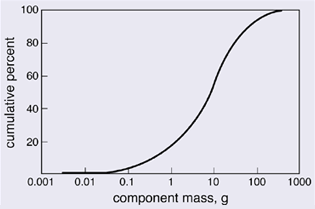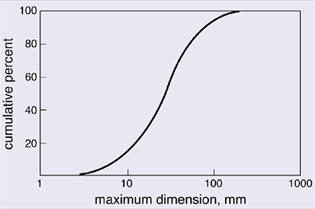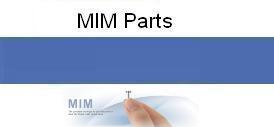|
|
News |
When is a part suitable
for Metal Injection Molding?
19th Apr, 2018
What is the production volume?
Because of the mould cost,
Metal Injection
Molding (MIM) is not usually
applied to lower production quantities, yet proves very
effective for large quantities. Generally, production quantities
of 200,000 or more per year are attractive.
There is little willingness to take on
production runs in the range from 5,000 to 20,000 per year.
Below 5,000 per year is possible, but most vendors do not like
to devote engineering talent to such projects.
Thus, MIM is most attractive for component such
as the mobile cell phone hinges。
Is the geometry complex in three dimensions?
Metal Injection Molding (MIM) is most effective when the component has
holes, slots, ribs, protrusions, and multiple features.
On the other hand, simple two-dimensional
shapes, such as flat components with uniform section
thicknesses, are better produced using stamping, rolling, or die
compaction.
Is it feasible to use MIM for production?
Technical
feasibility is best measured with respect to the typical part
profile and a good example is seen in Fig. 1.

Fig. 1 A 8.5 g firearm
component with a maximum dimension of 27 mm, showing
several of the desirable features for MIM, including
the hollowed out section
Most MIM parts
are small, complex, thin walled, and like Goldilocks ‘just
right’ with neither too few or too many features. Here are some
of the typical attributes:
- typical mass is about 10g, but the range is from 0.02 to
500g
- the distribution in production is shown in Fig. 2
- typical maximum dimension is 25 to 35 mm, ranging up to
260 mm
- the distribution of maximum dimension is plotted in Fig.
3
- typical wall thickness often is 2 to 3mm, ranging down
to 0.1 mm
- typical number of specified dimensions is near 70.
 |
 |
Fig. 2 Cumulative
distribution of
component mass for more
than 200 MIM parts,
showing the median is
near 10 g
|
Fig. 3 Cumulative
distribution of the
maximum component
dimension for more than
200 MIM parts, showing a
median near 25 mm
|
How different is MIM from plastic molding?
The MIM process shares many attributes with
plastics. Both favour hollow and thin-walled shape, with tapers
and generally slender geometries。
Generally, if a part is possible in plastics,
then it is possible via MIM, but it might not be economical.
What materials are possible?
Just about all common engineering materials have
been demonstrated in the MIM process.
However, it is best to stick with stainless
steels if possible. Over half of all MIM components are
fabricated from stainless steels, meaning this has the largest
vendor base, the largest body of process knowledge, and a low
material cost due to the high production volume.
Generally, MIM (Metal Injection Molding) is most attractive for higher
melting temperature materials. It is best to avoid very strong
oxide formers, reactive metals, volatile, and toxic metals.
Accordingly, beryllium, lead, manganese, and
magnesium are avoided. Of the lower melting metals, aluminium
has been demonstrated, yet has not reached large production
levels.
What about costs?
Production viability goes beyond just part cost
and includes mould cost and time to produce the mould, as well
as determination if the MIM operation has the skill, time, or
manpower to take on the project.
It is not easy to generalise, but tooling costs
and delivery times are significant. Often, smooth surfaces and
tight tolerances add much to the production cost.
Early discussions with a vendor can help
determine if the MIM part is over-specified to the point where
costs escalate.
|
|
|
|
|
|
|
| |




